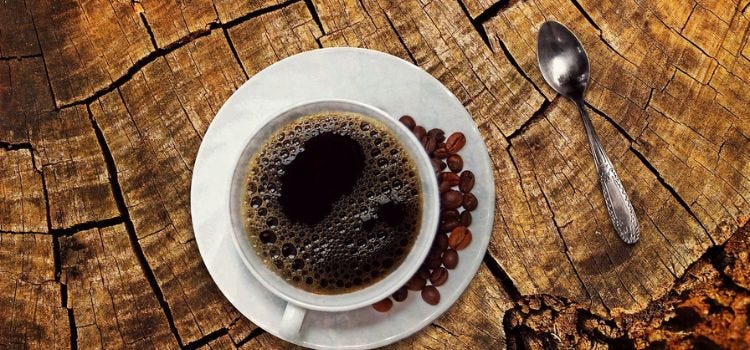Coffee is a pick-me-up to kick-start the mornings and reinvigorate the afternoons. The aroma of caffeine brings energy and helps you survive the day. As it is said, the caffeine content is the soul of a good mug of coffee. Yet, for some people, a decaf coffee does the same work. Now, a question might be popping up in your mind about what decaf coffee is and how it is made; it is simply a coffee made from beans by removing 97% of its caffeine content. It is called decaf because it has a low amount of caffeine. In this article guide, we will unravel its production process in detail.
Decaf Coffee – Reduced Caffeine Content
Decaf coffee, also known as decaffeinated coffee, has the full flavor of coffee without the jitters. Making decaf coffee involves a number of techniques to remove caffeine while maintaining the coffee’s inherent characteristics, and the process is both intriguing and complicated. As much as one might think that caffeine is the beauty of coffee, the decaf removes the content in an interesting manner.

Why Decaf Coffee Is Necessary?
They mostly decaffeinate coffee to provide an alternative for people who are sensitive to caffeine. Caffeinated coffee, a naturally occurring stimulant in coffee, can make some people anxious, induce sleeplessness, and elevate their heart rate. They can enjoy the beverage without these adverse effects by using decaffeinated coffee. Additionally, decaf coffee is appropriate for people who wish to drink coffee in the afternoon without affecting their sleep. Although there is caffeine in decaf coffee, it is in very small amounts. If you are wondering how much caffeine is there in decaf coffee, it is about 2mg, the rest of 97% is removed using any preferred method.
It is pertinent to mention that coffee comes in plenty of variations, such as white coffee with its unique characteristics. You can check it out in this article.

The Methods of Decaffeination
They usually remove caffeine prior to roasting coffee beans using a few different methods. Every technique has benefits and drawbacks that affect the finished product’s flavor and quality. The most widely used techniques are the CO2 method, the Swiss Water Process, the direct solvent approach, and the indirect solvent method.
1: Direct Solvent Method to Remove Caffeine
If you are wondering how do they make decaf coffee, you have come to the right place. There are several methods to remove the caffeine from coffee. The first one is a direct solvent method.
They extract caffeine directly from the coffee beans using a chemical solvent using the direct solvent method. This is how it operates:
1. Steaming the Beans: Steaming green coffee beans opens their pores, facilitating solvent penetration.
2. Applying the Solvent: Next, a solvent (usually methylene chloride or ethyl acetate) is used to rinse the beans. These solvents draw Caffeine molecules out of the beans through their binding.
3. Steaming Again: After eliminating the caffeine, they steam the beans again to remove any remaining solvent.
Although regulatory organizations deem the quantities employed as safe, people have concerns regarding chemical residues despite the method’s efficiency and cost-effectiveness.
2: Indirect Solvent Method to Make Decaf Coffee
The next method to remove caffeine from decaf coffee is the indirect method. They soak the beans in hot water using the indirect solvent method to dissolve the caffeine. The steps involved are as follows:
1. Soaking in Hot Water: The caffeine and other soluble ingredients in green coffee beans are dissolved by soaking them in hot water.
2. Separation: The beans are taken out of the water, which now contains coffee soluble and caffeine.
3. Solvent Extraction: They use a solvent to remove the caffeine from the water. After removing the high-caffeine solvent, they add the water, which still contains the coffee solubles, back to the beans.
4. Reabsorption: The beans reabsorb the coffee soluble in the water, preserving a large portion of their original flavor.
This technique exposes beans to fewer solvents, retaining more of their original flavor.
3: Swiss Water Method for Decaf Coffee
Using osmosis and water, the Swiss Water Process is a chemical-free decaffeination technique that eliminates caffeine. This is how it operates:
1. Initial Soaking: They steep green coffee beans in hot water to dissolve the caffeine and other soluble ingredients.
2. Making Green Coffee Extract (GCE): They filter the water, which now contains caffeine and coffee solubles, through an activated charcoal filter. The filter collects the caffeine molecules while letting the other solubles through to produce a caffeine-free green coffee extract.
3. Decaffeination: The GCE is used to soak fresh green beans. Only caffeine diffuses out of the beans into the extract since coffee soluble has already saturated the extract.
4. Repeat: They repeat the procedure until the beans are 99.9% caffeine-free.
Many people prefer the Swiss water process because it takes a natural approach and preserves the taste and integrity of the coffee.
4: CO2 Approach to Make Decaf Coffee
Caffeine is extracted using liquid CO2 in a process called supercritical carbon dioxide decaffeination. This is how it works:
1. Loading the Beans: A high-pressure extraction vessel is filled with green coffee beans.
2. Applying CO2: High pressure is applied to the vessel to drive liquid CO2 into it. As a solvent, the CO2 binds to the molecules of caffeine.
3. Caffeine Extraction: After moving the CO2 that contains caffeine to a different vessel and releasing pressure, they allow the CO2 to evaporate, thereby removing the caffeine.
4. Recycling CO2: They recycle and reuse CO2 during the procedure.
The highly effective CO2 technique preserves the natural characteristics of the coffee and leaves no chemical trace behind.

Effect on Taste and Quality of Decaf Coffee
Regardless of the technique employed, the decaffeination procedure might affect the coffee’s flavor and quality. Caffeine removal with the preservation of the bean’s inherent qualities is the goal in mind. This is how each process influences the finished product:
- Direct Solvent Method: The use of solvents can slightly change the flavor; however, improvements have reduced these effects.
- Indirect Solvent Method: This method involves more effort and takes longer, but it preserves more of the original flavor.
- Swiss Water Process: Many people favor this chemical-free method because it preserves the coffee’s original flavor.
- CO2 Method: Fancy technology yet very good at retaining flavor.
Now that we have discussed the methods of decaffeinated coffee production, it is worth mentioning that this coffee offers a wide range of benefits, such as reduced anxiety, blood sugar, improved sleep, and much more.
You can check out the detailed benefits of decaf coffee in this article.
Conclusion
Wrapping up, the article covered a detailed discussion on what decaf coffee is and how it is made using different techniques and processes. So, if you are allergic to caffeine or simply want to avoid it due to its adverse side effects, decaf coffee is your solution. Try out this coffee and enjoy!



